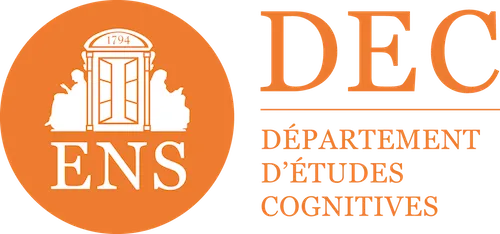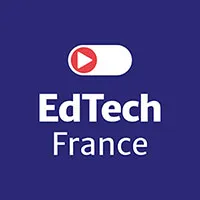

How to choose the best platform for creating online training?
The online training market is exploding, but concrete results do not always follow. Despite the abundance of learning management system platforms, only 15% of e-learning courses are actually completed by users. The challenge is no longer to simply digitize courses, but to truly transform skills. How to select a platform that guarantees not only commitment, but also real impact on the ground for companies wishing to create and sell training courses?
The limits of traditional online training platforms
Most current LMS solutions don't live up to their promises. These training sites focus on bringing content online and adding engagement features, without really solving the fundamental problem: effective learning.
The first generation of platforms was limited to distributing online courses. The second attempted to improve the user interface without transforming the underlying pedagogy. Result? Training courses that are pleasant to follow but have no lasting impact on the professional world.
Traditional learning management systems like Moodle, Teachable, Thinkific, or Learnybox suffer from structural limitations that compromise their effectiveness. They offer standardized courses that are not adapted to the individual needs of learners and to the specificities of professions.
Moreover, creating courses on these platforms is still a time-consuming process. It takes an average of 20 days of work to produce one hour of quality interactive training, which is a major disadvantage for trainers and business experts.
The recurring problems of traditional platforms:
- Completion rates rarely greater than 15%
- Excessive creation time (20 days for 1 hour of content)
- Difficulty for business experts to produce training courses without pedagogical skills
- Generic content not adapted to specific needs
- Lack of measurement of real impact on skills
- Consistent learning experience that doesn't take individual levels into account
- High costs with inflexible subscription plans
- Significant transaction fees on course sales (commissions)
The 3 fundamental criteria for choosing an effective training creation platform
Choosing an LMS platform should go beyond technical and aesthetic considerations. Beyond the marketing features offered by solutions like Podia, Udemy, or Systeme.io, we need to look at what is really transforming online learning.
Before choosing your platform, ask yourself these key questions:
- Is the platform based on scientifically validated educational principles?
- Does it allow your business experts to easily create courses without technical expertise?
- Does it offer a truly personalized experience for each learner?
- Does it measure the real impact of training on skills?
- Does it fit into your existing ecosystem and into daily work?
- Does it offer good value for money with no hidden fees or high commissions?
Educational effectiveness above all: the cognitive science approach
Online learning is not a mysterious process. Cognitive science research has identified fundamental principles that optimize the integration and retention of knowledge.
A truly effective course creation platform must incorporate these principles into its architecture itself. Information must be presented in a way that respects the capacities and limitations of the human brain, beyond the simple videos and basic quizzes offered by most e-learning tools.
Among the essential mechanisms are the effort to retrieve memory (retrieval practice), spaced practice and the contextualization of learning. These techniques can increase knowledge retention by up to 100%.
A good platform doesn't just transmit content, it optimizes each stage of the cognitive journey : motivating the learner, deconstructing preconceived ideas, consolidating memory and facilitating practical application in real time.
Simplicity of creation for business experts
The real content experts are your business collaborators. However, most platforms require technical skills that make it difficult for trainers to learn.
A modern platform must democratize the creation of educational content. With educational artificial intelligence, the Design time can be divided by 10, going from 20 days to only 2 days for one hour of interactive training.
This ease of use makes it possible to capitalize on the company's internal knowledge. Experts can focus on the content without worrying about the form, which the AI automatically optimizes according to established educational principles, without requiring design or web development skills.
The result? Training courses that are more relevant, more up-to-date and in line with the realities on the ground, created directly by those who know the subject, whether they are independent entrepreneurs or corporate trainers.
Intelligent personalization of the learning journey
Each user is unique. His prior knowledge, learning pace and specific needs require a personalized approach that a standardized curriculum cannot offer, unlike the models offered by Kajabi or Teachable.
THEAdaptive learning is the answer to this challenge. This approach makes it possible to dynamically adapt content and activities according to the profile, performance and interactions of each learner, unlike the linear paths offered by the majority of platforms on the market.
Initial positioning tests identify relevant modules for each user, avoiding redundancies and effectively filling gaps. This personalization can reduce training time by up to 50% while significantly increasing impact, which no consumer platform options really allow.
More than simply adapting the pace, true personalization also adjusts examples, scenarios and teaching methods according to the specific professional context of the learner, whether for vocational training or higher education.
Artificial intelligence at the service of pedagogy: a revolution in the creation of training courses
The emergence of generative AI has transformed many sectors, but its application in the field of creating online courses requires a specific approach. A general-purpose AI can produce content, but only an educational AI designed specifically for learning can turn that content into a transformative experience.
An educational AI analyzes your raw content and optimizes it according to scientifically validated principles. It identifies key concepts, organizes them logically and progressively, and automatically generates the most appropriate learning activities for each learning objective.
Contrary to popular belief, AI is not there to replace human expertise, but to enhance it. It frees trainers from technical tasks so that they can focus on the quality of the content and the support of learners, which tools like Teachizy or open source solutions do not allow.
Comparison: manual creation vs creation assisted by educational AI
Educational AI represents a paradigm shift. It makes it possible to move from a very general approach to real mass personalization, making accessible to all an educational quality previously reserved for the most expensive training courses.
How the right platform transforms training results: concrete cases
Businesses that have adopted a scientific approach to online training are seeing dramatic results. Far from the usual marketing promises, these organizations measure concrete impacts on their performance indicators and operational efficiency.
Take the example of One Business School, a 100% online training center that has revolutionized its content production thanks to Didask. In just two months, they produced 150 training modules, and in ten months, that figure reached 1,100 modules. This massive acceleration allowed them to respond to their internal and external orders with unprecedented responsiveness.
At Canal+, the training of itinerant salespeople in Africa posed a considerable challenge. Thanks to Didask's error-based approach and concrete scenarios, salespeople were able to truly take ownership of the training courses.
Improvements seen with intelligent learning platforms:
- 93% increase in the perceived impact of training courses on daily professional life
- 50% reduction in the time required to develop skills
- Training completion rate greater than 85% (compared to 15% on average)
- Reduction of 60% in the time required to create educational content
- Significant reduction in training costs (up to 40%)
- Measurable improvement in business performance indicators
- Demonstrable return on investment
Didask: when cognitive science and educational AI meet to transform learning
In this rapidly evolving landscape, Didask stands out as a unique French solution that precisely meets the three fundamental criteria identified. Created by researchers in cognitive sciences, our platform has developed a radically different approach to online training.
Didask doesn't just apply a few superficial pedagogical principles. Its entire architecture is designed around the cognitive functioning of the learner, guaranteeing optimal and sustainable assimilation of knowledge.
The revolution brought by Didask is based on its ability to automatically transform any raw content into a structured and personalized learning experience. The business expert can focus on his expertise, the platform takes care of optimizing the pedagogy.
Innovative Didask features:
- Educational AI that automatically structures content
- Adaptive positioning tests for personalized paths
- Automatically generated simulation exercises
- Smart flashcard system for long-term memory
- AI assistant for personalized support
- Micro-challenges for the field application of knowledge
- Advanced analytics to measure the real impact of training
- Intuitive interface accessible without technical skills
- Expert customer support to help you
Create an effective training course with Didask in 3 steps:
- Import your raw content (document, presentation, video)
- Educational AI automatically analyzes and transforms your content
- Validate and distribute your optimized training in a few clicks
Transforming raw content into a learning experience
Didask's educational AI is revolutionizing the creative process. It analyzes your existing content (documents, presentations, videos) and transforms them into educational modules structured according to the principles of cognitive science.
This technology goes far beyond simple text generation. It identifies key concepts, organizes them logically and progressively, and automatically generates the most appropriate learning activities for each learning objective, without requiring design or programming skills.
For each important concept, the AI creates relevant exercises, concrete scenarios and interactive quizzes for long-term memory. It even adapts the examples to the professional context of the learner, whether students or employees.
The result is a drastic reduction in creation time: what used to take weeks can now be achieved in a few hours, without compromising — and even improving — educational quality, with easy handling for all users.
The AI assistant, a personalized learning companion
Beyond content creation, Didask offers a AI assistant that accompanies each member throughout their learning journey. This assistant acts as a personal tutor, available in real time to answer questions and remove obstacles.
The assistant can recommend training paths adapted to the specific needs of the user, reformulate complex concepts, offer personalized examples, and even provide detailed feedback on the learner's productions.
This approach answers the famous “2 Sigma problem” identified by researcher Benjamin Bloom: the average learner who benefits from personalized tutoring achieves results greater than 98% of learners in classical education. With Didask, this quality of support becomes accessible on a large scale.
The assistant is not limited to the platform: it integrates with the learner's daily tools (Slack, Teams, etc.) to anchor learning in the workflows and promote the concrete application of knowledge, far beyond what traditional mobile applications allow.
Conclusion: beyond the LMS, towards a real transformation platform
The era of simple LMS is coming to an end. The organizations that will succeed in their digital transformation are those that will understand that the challenge is not to digitize content, but to truly transform skills.
The ideal online training creation platform is no longer defined by its technical functionalities, but by its ability to generate a measurable impact on individual and collective performance, without hidden commissions or high transaction fees.
By combining cognitive science and artificial intelligence, Didask paves the way for a new generation of learning tools. Finally, it makes it possible to keep the promise of online training that is as effective — or even more — than the best face-to-face training.
The question is no longer whether you should digitize your training courses, but how you can do it intelligently to maximize their impact. Technology is now at the service of pedagogy, and not the other way around.
FAQ on platforms for creating online training courses
How do I choose a training platform?
Choose a platform that combines proven pedagogical effectiveness, ease of creation for your business experts and the ability to adapt to the specific needs of your learners. Test multiple solutions before engaging and ensure that the platform integrates well into your existing technical ecosystem. Also, assess the quality of customer support and opportunities for growth.
What are the functionalities for an LMS platform?
Key features include: an intuitive authoring tool, options for customizing paths, detailed analytics to measure impact, social features to promote collaborative learning, and capabilities to integrate with your existing tools. The advanced functionalities to be preferred are the automatic adaptation of courses, the automated generation of relevant exercises, and intelligent feedback tools.
How do I create an online course?
The effective process consists of 5 steps:
- Define precisely the learning objectives and the competencies targeted,
- Structure the content into logical and digestible sequences,
- Create a variety of activities to maintain engagement and strengthen learning,
- Integrate formative evaluations to check progress,
- Gather feedback to continuously improve the content.
With a platform equipped with educational AI like Didask, several of these steps are automated.
What are the best training platforms?
The “best” depends on your specific needs. For companies and training organizations aiming for educational effectiveness and business impact, Didask stands out for its scientific approach and its educational AI. For organizations with significant technical resources, an open source solution like Moodle can be adapted. Avoid the mistake of choosing only marketing features and focus on the real impact on skills.
Make an appointment directly with our eLearning experts for a demo or simply more information.













